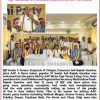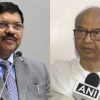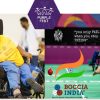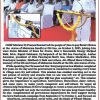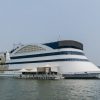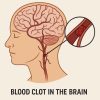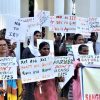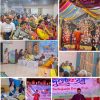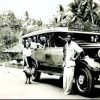Goa is abuzz with excitement as vintage bike and car owners, users, collectors and fans are decking […]
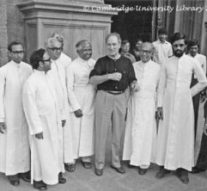
Walking Down Memory Boulevard
Uncategorized October 11, 2025By Rajan Narayan
When I moved to Goa in October 1983, in my early thirties, I did not anticipate I would spend the rest of my life here.
As it happens, on October 10, I will be celebrating the 42nd anniversary of my tryst with Goa. I first came to Goa in the late 70s when Shashikala Kakodkar was the chief minister. The indigenous fishing community – the Ramponkars – who used large nets to catch fish were agitated over the entry of trawlers,which poseda threat to their livelihood
A visit was sponsored by an NGO fighting for the rights of local traditional fisher folks. From Panjim we travelled across Goa to all the beaches – from Morjim to Colva and Pallolem in Canacona.
We even lent a hand in pulling the heavy fish-laden tampons. This was my first encounter with the formidable fisherwomen of Goa. I will never forget the six-feet-tall strapping Maria Conceicao,who would sit limbs akimbo in the Margao fish market.
The trawler owners also took us for a ride in the choppy sea, playing us with scotch whisky which made us even more unsteady.We rounded our trip with an audience with the imperious Shashikala, who had no sympathy for the fisherwomen.
“They are all chors. They (fisherwomen) wear more jewellery than me,” she would remarkwith a studied indifference. This, in some ways, wastrue of Goan fisherwomen because they would convert all theirearnings into gold ornaments and wore them on their person.
Perhaps, they did this to ensure their husbands did not pawn their gold to go on drinking binges. When I came to Goa and converted the 100-year-old Portuguese paper into an English daily, I did not know I had to start from the scratch.
We had no teleprinters but there was a composing room equipped with computers. There were no staff except a newseditor, who had joined me from Bombay. The then editor of the Navhind Times would scoff,“when is your paper coming out?”
I was lucky to find a local journalist Devika Sequeira –the niece ofthe Indian Politician and ‘Father of the Opinion Poll’ Jack Sequeira – to take on the role of the chief reporter. Our newsroom was full of chiefs but no followers.
In the next 10 days, I hired a group of kids, most of whom were college dropouts.I, literally, picked them up from the Miramar beach. I also recruited a 17-year-old flirtatious buxom lass whom all the men line-marrowed.
In just 10 days – on October 10, 1983 – we launched the English edition.NavhindTimes was the pro- governmentHindu paper. I positioned Heraldo as the Catholic opposition paper.
This was good for the daily’s bottomline because Goans like to publicly announce births and deaths in newspapers.They paid in cash for this.We stressed on investigative journalism. Our first major story was the murder of two elderly cantankerous sisters in Velimcalled girgiren in Konkani.
They possessed huge property. The motive was a bid to grab it. A politician and some police officers were involved. Devika exposed them all.The Heraldo arrived with bang on Goa’s print media scene.
We never looked back after that. When the 50 heads of state came for the Commonwealth Heads of Government Meeting (Chogm) retreat, we were here, there and everywhere. We followedthe British Prime Minister Maggie (Magaret) Thacher, when she visited the Basilica of Bom Jesus – the church where relics of Christian missionary St Francis Xavier lies.
We were hot on the heels of the first President of Zimbabwe Robert Mugabe as he paid homage to one of his ancestors, who had been a parish priest.
A Taj hotel employee passed a tape of a love song with which Kenyan Jomo kenyatta had wooed his wife to be (?? Jomo Kenyatta died in 1978. How was he at the Chogm?)
An 18-year-old newbie reporter was asked by a foreign minister to come to his hotel room in Cidade Goaat 10 pm for a scoop. I accompanied her. He opened the door to his utter shock to see me beside her.
When the newly built Mandovi bridge collapsed, our photographer rushed to the spot and capturedpictures that gave a sense of the manmade calamity to our readers.
The issue, which established Heraldo as the most influential media house in Goa, was the language agitation. I sensed there was a latent demand to make Konkani as the official language of Goa.
The statehood of Goa hinged on having an official language of its own. Konkani was the preferred language by all communities but did not have a common script. Therefore, by default, Marathi became the language of all religion and culture.
The battle intensified when a resolution, moved by the former Congress politician LuizinhoFaliero, was rejected by the legislative assembly. We carried a half-page cartoon by cartoonist Alexyz showing Konkani Mai (mother) in a coffin.
This aroused strong emotions. Simultaneously, I started a high-pitched campaign with daily front page editorials under Utt Goenkara(wake up Goans),Mai Bhas(my language) to be made Raj Bhas(State language).
A rally was convened at the Azad Maidan in Panjim. I waited with bated breath. The rally was going to make or break for Heraldo. Over two lakh people attended the rally, largest since liberation.
Prime Minister Rajiv Gandhi took notice. He directed the then Chief Minister Pratap Singh Rane to bring out a bill to make Konkani the official language.
The other once-in-a-lifetime event was the visit of Pope John Paul II to Goa on February 6, 1986. In preparation,I wrote a series of articles on ‘call of the Lord for ecumenical unity’– the theme of his visit.
This earned me a front row seat and an audience with the Pope. We shook hands and discussed the solidarity movement. I also got a golden medal which, to my wife’s chagrin,I gifted to a devout Catholic.
As long as the old man Antonio Cateano Fernandes was alive, I had a free hand. He did not see Heraldo as business venture. A self-made man, he was happy with the recognition Heraldo brought him.
His successor was quick to recognise the power of patronage. All the politicians, I wrote about, went to him for protection.He started issuing Fatwasto me. Gave me a list of the most corrupt politicians.
I was barred from writing about Manohar Parrikar when he became the chief minister. Slowly, the atmosphere at the newspaper –once charged with unbridled freedom and courage to take on establishments – became stifling.
It was time to bid adieu and reclaim my editorial freedom. By the middle of 2003, I walked out of Heraldo and started working on Goan Observer. On October 10, I handed my resignation at the annual mass and by October 15,I launched the independent weekly Goan Observer.
